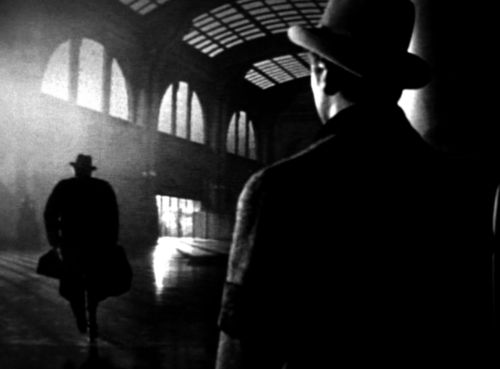He was one of the schoolmasters of genius I was so nearly taught by but never was, and at the end of the year he called all of us into the hall, dimmed the lights and played us this:
Afterwards, we trailed out into the daylight, uniformed and redundant under Bedfordshire’s big white sky. In the carpark, a hatchback started up unshowily. Behind me, I could still hear him shaking hands with the stragglers, naming them and remembering each with a personal message for themselves.
It would be almost thirty years before I saw the film again. By then, my recollections of it had dwindled down. Anton Karas’ score, of course. And the Piranesi-esque chase scene through the Viennese sewers. In between, I’d come across Piranesi, in one of those Dover paperback editions no doubt. The Piranesi-esque doesn’t need explaining, does it? There’s a human instinct for it; we all understand it straight away.
Noir is less obvious. Try telling a twelve year old that one of the twentieth century’s greatest genre creations is based on nothing more than mood. Especially in the nuclear era: nothing dampened the classical noir scenario quite like the Bomb did. Nuclear culture was all electric guitars, jump-cuts and colour.
The crucial difference is aftermath. The nuclear era was all prequel: waiting for the future to be taken away. It was a childhood of long hours in horror under the bedclothes, wondering why the Soviets and ourselves couldn’t just pack up and go home.
Noir, on the other hand is aftermath, the aftermath of the Great War: the knowing, bereaved sophistication that permeated Germany and France in the middle of the absence of the dead. In America, in the best detective noir, the same mood finds an interface between new wealth and something unspoken in first generation men and women who are no longer in the Pale or the south of Italy.
It’s abruptly contemporary to itself. Even the noir novels feel like they’re in that marvellously emulsioned black and white film that could stay out late for cafes, car headlights and shadows good enough to drink. It’s not nostalgic: nostalgia demands longing and the belief in better, and only the English still thought in those terms.
The essentially pre-1939 nature of it all is brought home by the way all the corruption, cynicism, distrust and isolation of noir isn’t accompanied by aesthetic failure. Europe’s ancient cities escaped the Great War unscathed, by and large, and America’s still at the Dick Whittington stage. 1914-18 wouldn’t be Le Corbu’s crisis. Gone the murderous silhouettes of trench hardware: Art Deco was the last unequivocally beautiful movement of its kind, and Noir fell right into its middle. The Third Man – post-WW2 – is as late as you can go with this: an elegant dance in the ruins, before rebuilding.
Only Jazz would be less culturally English in the whole long twentieth century. (There is Glasgow noir, now: God’s own city was always American where Edinburgh is French. Don’t ask the giggling English to know it). Even Eric Ambler’s London and Surrey travelling representatives had to undergo travel to get involved. Simenon’s Maigret and his compatriots scarcely had to make it to the kitchen.
But for all that, the English remembered it well. My schoolmaster hadn’t been the first that year to reach for noir. He was an enthusiast, but this next clip started out as a joke. No one laughed – it was a huge accidental success – and it wouldn’t be the last time Ultravox came out of the past clutching video treasure:
